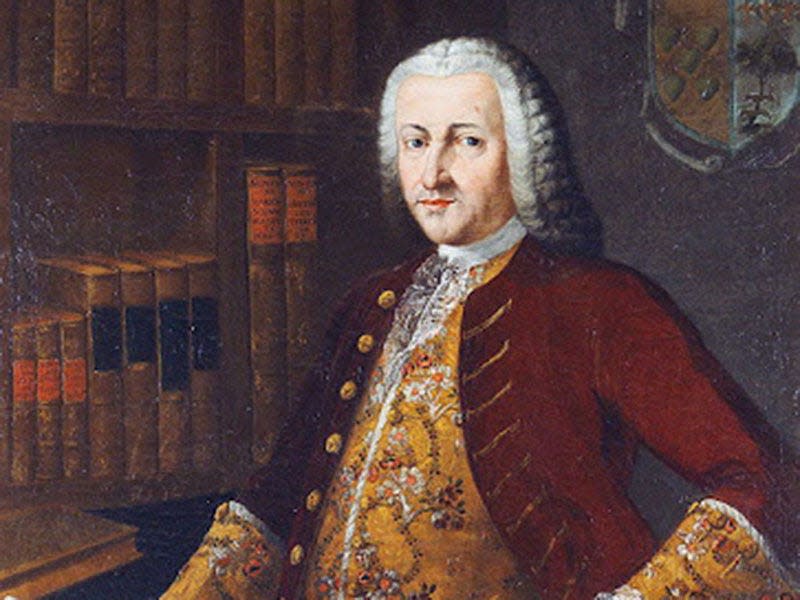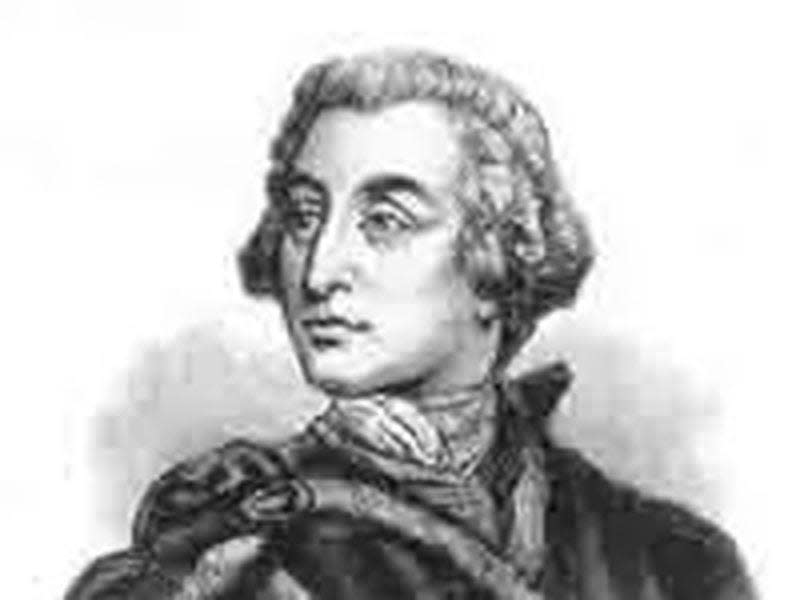Susan Parker: Gov. Montiano created first town for freed Blacks in St. Augustine
- Oops!Something went wrong.Please try again later.
- Oops!Something went wrong.Please try again later.
- Oops!Something went wrong.Please try again later.
- Oops!Something went wrong.Please try again later.
Friday evening, I was honored to speak to the Queen Sofia Spanish Institute at the launch of its huge online biographical dictionary. The event took place in Miami onboard the Juan Sebastian de Elcano, the Spanish Navy's training sailing vessel. My task was to speak within 20 minutes about four Spanish persons who influenced Florida's history.
The first person to speak, however, was Queen Sofia of Spain. With a five-minute limit, here is what I said about the place in Florida history about Gov. Manuel de Montiano, who once lived in St. Augustine in the governor's house.

$1.23M boost: St. Augustine's Fort Mose gains more exposure
Key site: Civil rights leader: Fort Mose a 'national shrine'
Manuel de Montiano y Sopelano arrived in Florida to begin his governorship in late 1737. Montiano is today probably best known in the United States for establishing the first town for freed Blacks in the United States — Gracia Real de Santa Teresa de Moze. The British called it Fort Moosa, now popularly known as "Fort Mose" (MO-say).
Forty years ago, Montiano's place in history, at least in U.S. history, was for preventing British troops from capturing St. Augustine in 1740. Today Montiano is better known for establishing the town for freed Blacks. The change in the emphasis on Manuel de Montiano's actions — from successful military man to liberator — reflects the changes in what we ask of history. Seldom is it noted that his creating the free town and his success with the 1740 siege were tightly interwoven.
British intruders asserted that Great Britain's claims extended into territory well south of St. Augustine. They had been carrying out incursions into Spanish Florida before Montiano arrived, little by little establishing fortifications and attempting to gather support among the Native American Indians.
Fort Mose: 'Flight to Freedom' to become year-round Black history trail
Enslaved Black workers had been escaping from English colonies to Spanish Florida for 50 years before Montiano arrived. In 1687, Florida Gov. Diego de Quiroga y Losada permitted eight men, two women and a baby who fled slavery in South Carolina to remain in Florida. The refugees lived with families in St. Augustine, were baptized and married in the parish church. Six years later, in 1693, Spain's King Carlos II affirmed Quiroga's decision and extended the offer of sanctuary in any Spanish American colony.
The daring of the escapees and the potential for sanctuary angered and frightened Carolinians. The establishment of the town in Florida only heightened the animosity. Montiano wrote that "on Nov. 21, 1738, 23 negroes of both sexes and children came here fleeing South Carolina. I am struggling to establish them in Moze a half league from here so that they may form a settlement."
Carolinians saw the escapes as an inspiration for slaves to rebel. When the "Stono River Rebellion" flared in September 1739, Carolinians blamed the example of the Mose village and the possibility of freedom in Florida.

More from Susan Parker
Spanish St. Augustine was the Center of the 'Century of Freedom'
St. Augustine Historical Society marked key sites as first projects in 1890s
Gen. James Oglethorpe of British Georgia was organizing an attack on St. Augustine and approached Carolinians to join. Carolinians refused to fully support the attack with men or money. Thus did fear instilled by Spanish policies, especially with the Stono River Rebellion, force Oglethorpe to modify to a weaker plan.
Oglethorpe's first plan was to starve the Spanish with a traditional siege, but he had to change to a direct assault, which required fewer men and less money. Montiano withdrew the people at Mose to the protection of St. Augustine in early 1740. On June 26, 1740, Spanish troops surprised the British invaders camped at the Moze village, won the battle, but destroyed the town. Then Oglethorpe began his unsuccessful 27-day siege against our city. In 1748 Montiano left Florida to become governor of Panama.

Susan R. Parker holds a doctorate in colonial history.
This article originally appeared on St. Augustine Record: Manuel de Montiano gave enslaved a place to escape in Fort Mose

